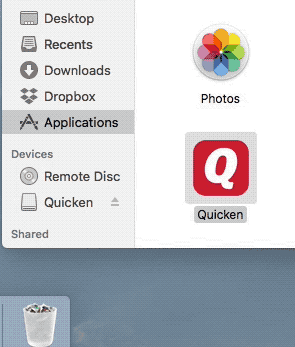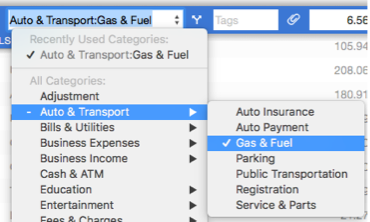
Quicken is known as the personal finance software that does multiple activities for managing financial tasks, like online bills payment, banking download, check books balance, online money transfer and many more. Quicken helps the Mac users to operate the financial account with 100% security and reliability. So, if you are a Mac user, hassle-freely use this software by just installing it. But if you are not able to Install or Uninstall Quicken on Mac, contact Quicken Technical Support Numberas it is the best way to get connected with the tech-geeks who are knowledgeable and skilled.
Right Ways to Install or Uninstall Quicken on Mac
You'll also want to remove the Quicken icon from your Dock, assuming it is there: click and hold on the Quicken icon until the pop-up menu appears; select Options Remove from Dock. You can stop there, but if you want to remove other pieces of Quicken data from your Mac, in the Finder hold the Option key while pulling down the View menu, and select Library.
Here are the possible solutions through which you can easily or effortlessly install or uninstall Quicken software on Mac. So, note-down these points in your mind and do the same on your Mac.
- Install Quicken On Mac
- Install Quicken from The Downloaded File on Your Mac
To do it, just have a glimpse on the given steps:
- If the file doesn’t open automatically, drag the Quicken icon from your installation disk into your Applications folder, or find the download on your computer and then double-click on that file
- Now, enter the administrator’s account name and password
- After doing that, double click on the Quicken icon in your Applications folder to launch the program
- Install Quicken with Using CD on Mac
Follow the below noted steps to do that:

- Insert the Quicken CD into the CD drive
- Double-click the Installer file, which can be found by opening your CD folder
- Hit “Continue” in the Welcome window
- Click Accept to the “Software License Agreement”
- Install to start installing process of Quicken
- Follow the on-screen installation instructions
- Doing so Quicken will installed in your Mac
- Uninstall Quicken On Mac
To do so, follow these given points:
- Locate Quicken in your Applications folder
- Drag the Quicken icon into the Trash
Do not worry! In case you are still unable to perform any of these installation or uninstallation process as we have tech-savvy who can help you out. To make connection with them, you only require visiting the link www.quicken.comand take the helpline number from there. After that, put a call on that number and get united with talented and experienced techies.
You might no longer need an application, or maybe you need to remove it to upgrade to a new version or to reinstall it. Mac OS X Snow Leopard doesn’t have an Add or Remove Programs utility for uninstalling software, nor does it need one, because virtually all Macintosh applications are self-contained in a single folder or series of nested folders. Therefore, removing an application is usually as easy as deleting the contents of the installation folder from your hard drive (for example, removing the Quicken folder to uninstall Quicken).
Always check the application’s README file and documentation for any special instructions before you delete any application’s folder! If you’ve created any documents in that folder that you want to keep, don’t forget to move them before you trash the folder and its contents. In fact, some applications may come complete with their own uninstall utility, so checking the README and documentation may save you unnecessary steps.
Some applications can leave preference files, start-up applications, or driver files in other spots on your disk besides their home folder. When you’re uninstalling a program that has support files in other areas, use the Search box in the Finder toolbar to locate other files that might have been created by the application. Again, don’t forget to check whether an application has an uninstall utility (or an uninstall option available through the original setup application).
Spotlight searches can help find files. In this example, a search is run on Microsoft Office 2008. By searching for the word office, a number of files created in other folders, such as the Settings file were found in the Preferences folder. Typically, you want to delete the main application folder and then remove these orphans.
BRITISH STANDARD BS 5839-1:2002 Fire detection and fire alarm systems for buildings — Part 1: Code of practice for system design, installation, commissioning and maintenance ICS 13.220.20; 13.320 BS 5839-1:2002 This British Standard, having been prepared under the. Purchase your copy of BS 5839-1:2002+A2:2008 as a PDF download or hard copy directly from the official BSI Shop. All BSI British Standards available online in electronic and print formats. Bs 5839 part 1 2002 pdf viewer pdf.
Spring Cleaning, from Smith Micro, also has the ability to uninstall a program, as well as a feature that can find and remove orphaned files left from past applications.